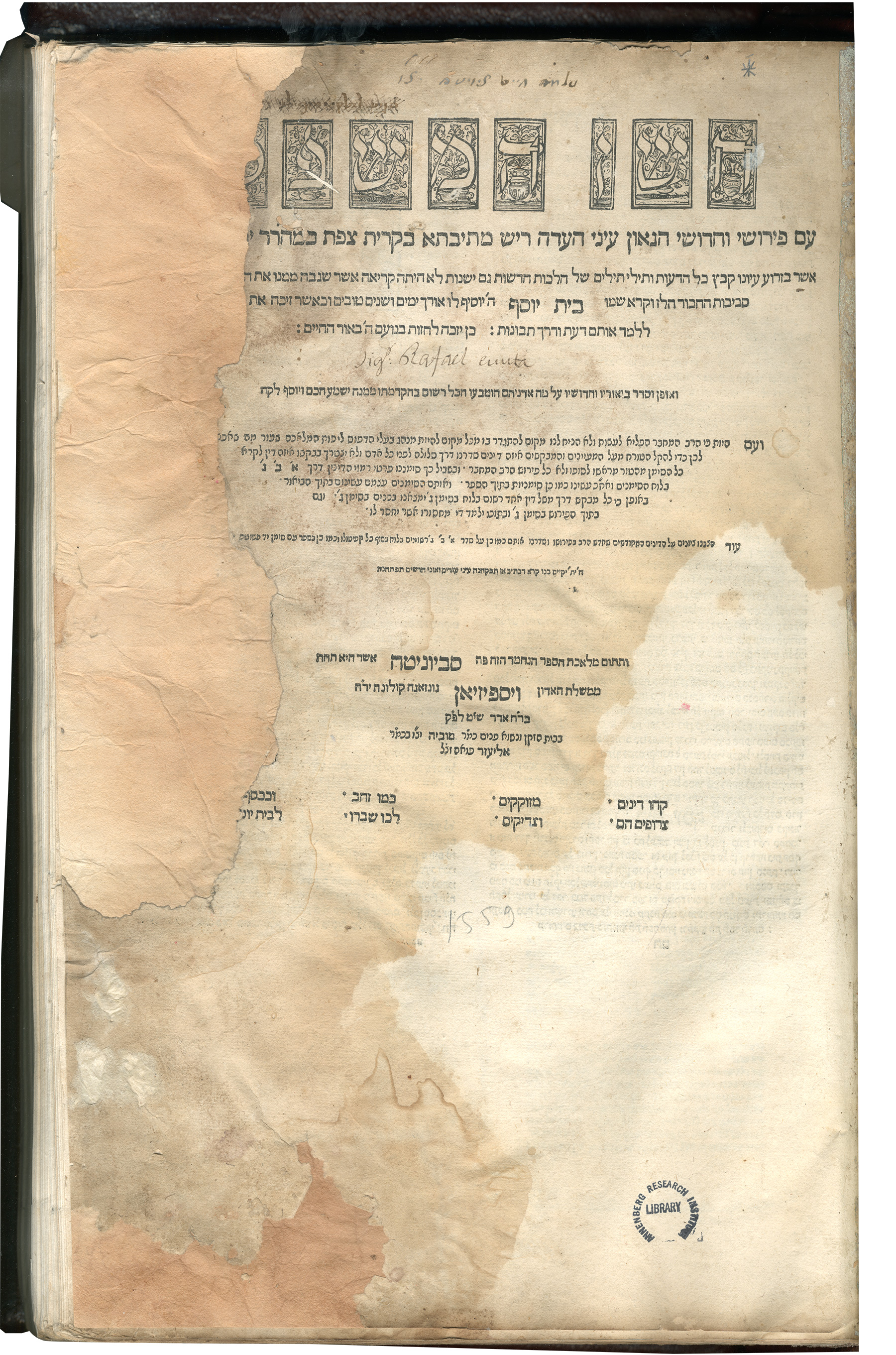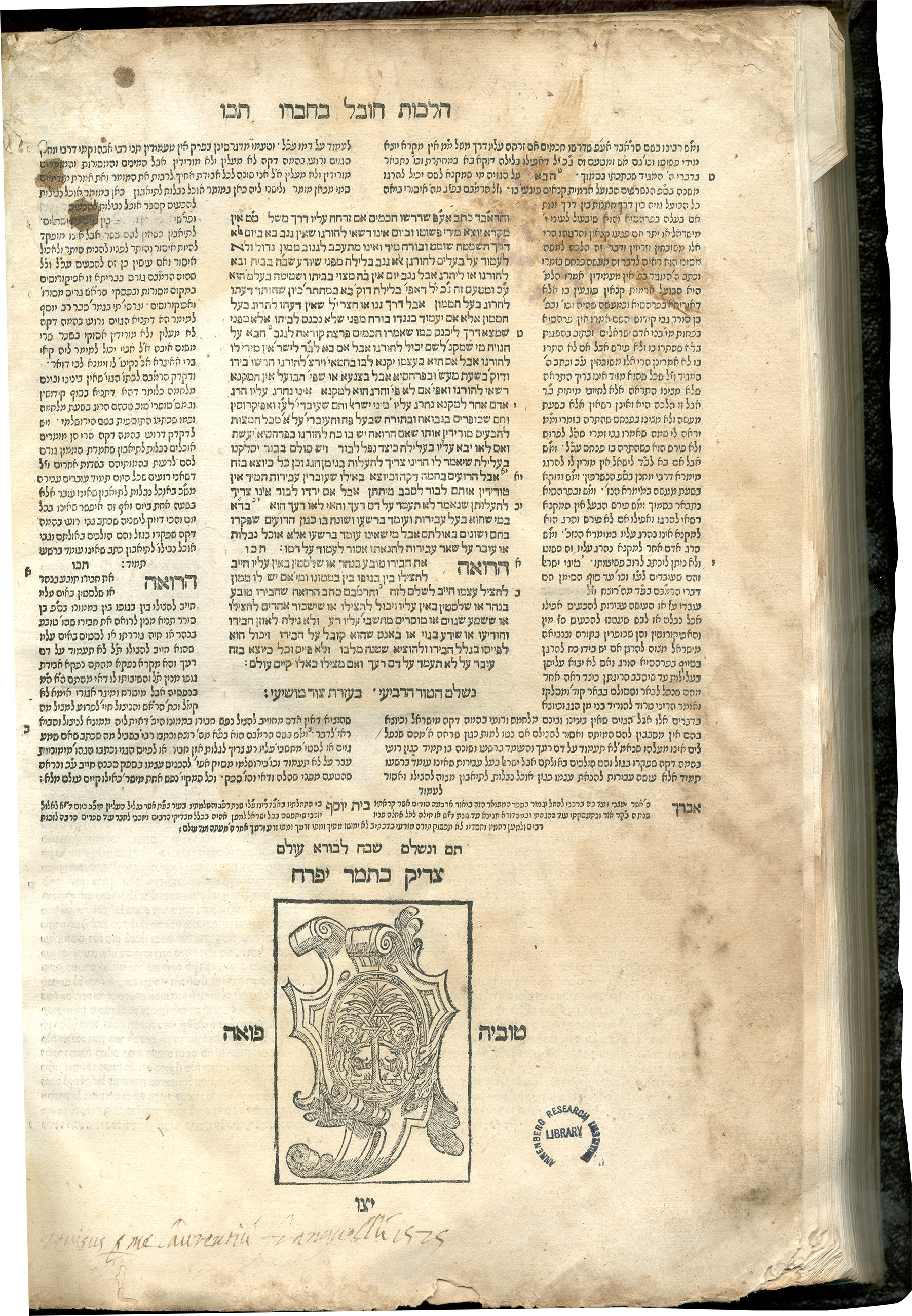The Bet Yosef (completed 1542, hereafter BY) and its subsequent revision and condensation, the Shulhan Arukh (published 1564–1565, Venice, hereafter SA) of Yosef Karo are the chief legal touchstones of early modern Jewry, exemplifying the scope, and limits, of halakhic commentary and codification. Both works follow the four part division of Ya’akov ben Asher’s fourteenth century, Arba'ah Turim. The BY was published as a commentary surrounding Asher’s work, while the SA was published as a stand-alone work, including in pocket-sized editions.
Pictured here, from the Sabbioneta edition of the BY, printed in 1559, is the fourth and final part, Hoshen Mishpat, named after the high priest’s breastplate. This volume, which contains a censor's inscription at the end, mainly treats the non-ritual aspects of leading a Jewish life (including questions of finance and sales, torts, and damages), but begins by noting how the courts should rightfully administer the law. Ironically, many of its strictures about how to follow the law

